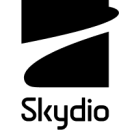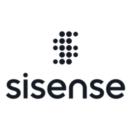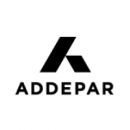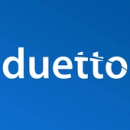
If you’re looking for something new and exciting, San Francisco may just be the place for you. Not only do the following tech companies have an abundance of open opportunities, they’re also working on some pretty compelling projects.
Whether it’s rebuilding a data acquisition subsystem, launching an improved drone model, developing an automated money-management service or implementing a new API management system, the sky’s definitely the limit for these Silicon Valley stalwarts.
What’s more, current engineering professionals all boast collaborative and supportive company cultures.
“We strive to create a blameless learning culture where we work together as one,” Satnam Alag, SVP of software engineering at GRAIL, told Built In SF.
Digit is a data-based financial health platform that uses machine learning and artificial intelligence to help customers reach their short and long-term financial goals. Since its inception in 2013, the company has saved customers over $5 billion, according to its website.
Digit’s tech stack: “Digit’s stack is composed of a React frontend app, a Node.js backend API and a Kubernetes-based service mesh for data processing,” Johnson said. “As a machine-learning engineer, I train ML models and can deploy them automatically as stand-alone gRPC microservices within our service mesh using our CI/CD system. This enables model iteration and development to take days as opposed to weeks or months.”
“Some other tools used frequently include both Mode and Databricks. Mode integrates with our data warehouse and combines the data-querying capabilities of SQL with the data-exploration power of Pandas in a Jupyter-style Python notebook. This is ideal for quick hypothesis testing and experimentation. However, it lacks the ability to process large quantities of data efficiently. Databricks, on the other hand, leverages the parallel-processing power of Spark clusters to handle larger workloads. These workloads include training models and simulating changes to our automated money-management service.”
I get to work alongside people who are passionate about the impact their work has on the world.”
Making financial health accessible: “I recently led the development of an automated money-management service (nicknamed MoMa) designed to treat money management as a Markov decision process. MoMa takes a user’s current financial state as input and returns the action(s) that it believes will move the user to a healthier financial state. Originally, these actions were restricted to transfers between the user’s primary checking account and their savings goals. Since then, Digit has expanded to cover automated credit card, student loan and bill payments as well as automated investments.”
Aligning business vision and culture: “Digit is about people — both those who work here and those we serve. Our drive to improve our customers’ financial health is built into the fabric of who we are as a company. As clichéd as it may sound, this mission-driven culture means I get to work alongside other people who are passionate not only about the tech they’re working on but also the impact their work has on the world. Additionally, because we have opted to go with a subscription-based business model, we are directly incentivized to build a product that our customers find value in and are willing to pay for. Our subscription model allows us to remain aligned with customer interest and feel good about the work we do every day.”
Skydio creates autonomous drones for consumer, enterprise and government use. The company recently announced a strategic partnership with Axon to offer its drones to law enforcement and emergency responders via Axon’s unmanned aircraft program, Axon Air.
Skydio’s tech stack: “The autonomy team at Skydio programs in C++ and Python to develop state-of-the-art autonomy on our drones,” Hotlz said. “My favorite part of working at Skydio is the insane iteration time we get. I can think of an idea, write the code, test in simulation and fly it all in one day. As a roboticist, this is basically a dream scenario, and very rare in this field. We are also encouraged to get hands-on experience with our products, whether that’s using our drone to film ourselves, do landscape photography or create 3D maps from our flights.”
A focus on hardware: “Right now, we are working on releasing a new drone, the Skydio X2, and a new controller, the Skydio Enterprise Controller. Developing software for a new hardware platform is always a big challenge and the X2 adds many capabilities on top of what we had available on the Skydio 2. To me, nothing is more exciting than releasing a product out into the world.”
My favorite part of working at Skydio is the insane iteration time we get.”
Working on a research-focused team: “Our team is very collaborative and has a research focus to it, both of which are necessary to make such an advanced autonomous robot. I’ve also been able to work across all parts of our SW stack. One of my current favorite parts of our culture is one of the Slack channels where we share clips of moments we accidentally caught of ourselves on a Skydio drone while testing our code, where we tripped, broke something or dropped something.”
What they do: Sisense is a business intelligence software product development company that provides users with a complete solution for preparing, analyzing and visualizing big or disparate datasets.
Sisense’s tech stack: “My team primarily uses React/Typescript and Golang, but other teams code in Javascript, Python, Java, Ruby, and more,” Carlson said. “Our applications run in Kubernetes built on AWS and all developers are encouraged and empowered to be hands-on with the infrastructure that runs their code. My favorite tech tools that my team uses are the ones we build. We’re a data company, so we use Sisense dashboards to validate hypotheses and make intelligent product decisions that are backed by data.”
All developers are encouraged and empowered to be hands-on with the infrastructure that runs their code.’’
Putting control into the customers’ hands: “I’m working on an application that’s designed to monitor and control cloud-hosted Sisense deployments. It’s challenging for a many reasons, such as the sheer number of integrations with other services and the fact that, for many features, we’re automating processes that have been done manually behind the scenes by humans and putting direct control into customers’ hands. The data that we display needs to be accurate, actions need to be reliable, and performance needs to be high. Our product is going to give customers visibility into and control over 500+ (and counting) deployments, so I enjoy solving complex problems knowing that the software we’re building has an eager user base ready to take advantage of new features right away.”
The Sisense Sizzle: “The Sisense Sizzle is a weekly get-together where folks from all departments gather to celebrate promotions, meet new hires, give each other shoutouts for going above and beyond, face off in hilarious challenges (some highlights include cook-offs, pie eating and sumo wrestling), and more. Anyone can pick a theme and host. I still have the Sisense-themed rap battle lyrics from a colleagues’ SNL-based Sizzle from a few weeks ago running through my head. I love gathering as a team to celebrate each week’s wins and see the talent and creativity of the folks around me on full display!”
GRAIL is a healthtech company that aims to develop blood tests that help detect cancer earlier than traditional medicine. In March, the company announced that its proprietary multi-cancer early detection blood test, Galleri, will be offered at select Providence health system facilities in California, Washington and Oregon, with more states slated for later this year.
GRAIL’s tech stack: “Since its founding, GRAIL has invested in building software that is designed for massive population-scale data,” Alag said. “We believe in using tools that are best suited to get the job done. For example, our core distributed computing infrastructure can handle computations expressed as directed acyclic graphs using a language we have developed (and open-sourced) called Reflow. This Go-based platform automatically parallelized the computations across hundreds of container nodes leveraging Kubernetes.”
“To keep the costs low, it has an affinity toward low-cost AWS spot instances and caches computation results to reuse them. We aim to automate all our infrastructure-as-code using Terraform, leveraging various languages, including Java and JavaScript, to write automated tests. Additionally, we use React-based JavaScript frameworks to develop our UI applications.”
We strive to create a blameless learning culture.”
Automation as a core strategy: “Over the last year, we have invested in building a microservices-based platform that powers our many applications. At GRAIL, our architecture and code base is sacred to us, and it is always a challenge to balance the pace of new features with underlying technical debt. Within the last six months, we have more than doubled our software engineering team. We have invested in building reusable software components, abstracting out the core business logic into an explicit workflow document that will enable us to run different workflows through the platform as we launch multiple products.”
Working toward a shared mission: “We are lucky to have a group of software engineers who are not only incredibly talented, humble team players but have a shared mission to detect cancer early and save lives. We are fortunate to be in a space that is seeing hyper-growth. It is a unique opportunity to build platforms, frameworks and software components that will handle population-scale data. We strive to create a blameless learning culture where we work together as one.”
Addepar is a wealth management platform specializing in data aggregation, analytics and performance reporting. At the end of 2020, the company closed a $117 million Series E round of funding, bringing the company’s total funding to approximately $325 million.
Addepar’s tech stack: “Addepar has exposed me to a broad cross-section of our tech stack,” Evans said. “Starting on the client-services side, I primarily built internal tools — mostly using Python — to interact with our back end on bulk workflows. As a de facto member of our analytics team, I also helped build out extract, transform, load tools to load data into a MySQL database for our business intelligence.”
“A few years ago, I moved to our Wormhole team, which is focused on enhancing the user experience by building in-app integrations and enabling APIs and outbound integrations to platforms that consume Addepar data. Our team touches many layers of our tech stack. Most of our back-end services are built with Java 11. From a front-end perspective, we use a JavaScript framework called Ember.js. For our infrastructure, we use AWS to host our servers, Kubernetes for deployment and scaling of our services and Kafka for our messaging system. Financial data is stored in MySQL. MongoDB supports our data pipelines and Elasticsearch handles our audit trail data.”
The way we have structured our team is one of my favorite things about working here.”
Looking toward seamless automation: “The Addepar platform holds a lot of financial data for our clients. Most transactions are handled through automatic overnight custodial feeds. But in some cases, we manually upload the transactions either in the UI or with our Excel import tool. At the beginning of March, we began beta testing our client-facing transactions API that we had developed over the previous quarter. This API will allow clients and third-party developers to easily automate the import of transactions into Addepar. A project highlight was connecting directly with clients to better understand their pain points. Being part of this user research allowed for a better design, plus the knowledge that what I was building was impactful for our clients.”
It takes a village: “The way we have structured our team is one of my favorite things about working here. We are very cross-org oriented and collaborate across engineering, product, design and client-facing teams to accomplish our end goals. One of Addepar’s core values is #BestIdeasWin. It not only allows us to help drive products forward and make positive impacts; it also provides for great feedback loops on either your own ideas or learning from others.”
Duetto is a cloud technology company that’s designed to improve the lives of hospitality professionals through the use of data and analytics, automation and artificial intelligence.
Duetto’s tech stack: “We have a robust cloud technology platform built primarily using Java for the application backend and React/JS to power a modern client UI,” Evans said. “We leverage MongoDB for data persistence across multiple business subdomains, enabling us to extend our logical document model as needed to integrate with a wide variety of third-party systems and data sources. Our DevOps platform provides continuous monitoring, secure processing and automatic notification as needed to ensure a high availability experience for our customers, partners and support teams.”
Our team carries a win-win-win swagger that leads to proven resilience.”
Supporting massive data scale: “Within the larger platform architecture, we are rebuilding our data acquisition subsystem to enable significant new data integrations for both new and existing customers. This effort unlocks compelling growth opportunities for our business to support massive data scale and innovative new capabilities for our customers. Engineering and DevOps are working together closely to ensure that the transition goes smoothly and a deepening sense of ownership across multiple teams has been unmistakable.”
Persevering despite outside setbacks: “Our team carries a win-win-win swagger that leads to proven resilience. We have supported an industry that was perhaps one of the hardest hit by the recent pandemic, and have persevered. Not only that, but our loyal customers stayed with us as an essential partner during a time of crisis. This team takes pride in delivering a great product. Despite this fearless confidence, there is a humility here that recognizes we all continue to learn and grow, and are the better for the setbacks we have overcome.”
















